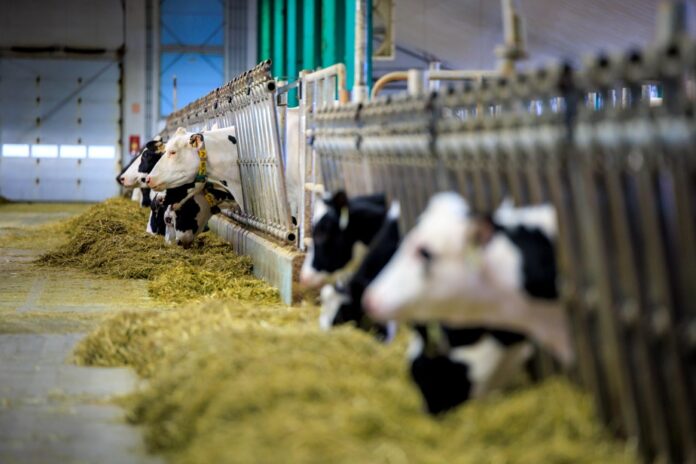Quebec wants to fight climate change on the floor of the cows. $3.6 million in assistance will be announced Thursday to fund a groundbreaking project that aims to reduce methane emissions from the province’s dairy herds by approximately 14% to 16% for every kilogram of milk by 2028. milk produced.
The Minister of Agriculture, Fisheries and Food of Quebec, André Lamontagne, will make the official announcement during the general assembly of the Producteurs de lait du Québec which is taking place in Saint-Hyacinthe, learned La Presse. .
This “major” project is part of an ambitious goal announced last year by the Dairy Farmers of Canada: to achieve carbon neutrality by 2050. It will be led by the center of expertise in dairy production Lactanet, in partnership with Les Producteurs de lait du Québec.
With their belching (and flatulence to a much lesser extent), cows emit methane (CH4). Methane is formed in the rumen – the front compartment of the stomach of cattle – through a microbial process called enteric fermentation.
“When you look at the greenhouse gases [GHG] that a dairy farm will emit, the methane that comes from enteric fermentation represents 40 to 45% of that, so it’s really a big lever that we have for achieve our goal [of carbon neutrality],” explained agronomist Chantal Fleury, assistant director of economic research for Les Producteurs de lait du Québec.
Methane is a potent GHG that has nearly 28 times the global warming potential of carbon dioxide (CO2) over 100 years. It has been responsible for about 30% of global warming since pre-industrial times.
The project will take place in three stages. Everything will start with the development of a mathematical model that will make it possible to precisely determine the methane emissions of a farm from the molecular composition of the milk it produces.
This data will then be compared to milk samples. “Methane is not in milk,” says Daniel Lefebvre, chief innovation officer at Lactanet.
By analyzing the milk with infrared technology, it is possible to correlate the profile of different fatty acids in the milk and the extent of the animal’s methane emissions, he explains.
“The next step, beyond the cow, is to take the sample from the tank of the farm that is collected every day and then have, in near real time, an assessment of the emissions from that farm. “, he explains.
“We, at the Saint-Anne-de-Bellevue laboratory, already analyze an average of 15,000 milk samples per day from all the farms in Quebec, so it’s very high volume, at very low cost. While measuring methane emissions, in real life with these sensors, is very expensive. We just put it in about ten farms because each sensor costs at least $10,000. »
In the second part of the project, 50 Quebec farms will be selected based on data from milk samples collected and analyzed by Lactanet.
Half of the group will be made up of top performers and the other half will be farms with the greatest potential to improve.
Lefebvre points out that factors such as the animal’s diet and genetics can greatly influence individual animal emissions.
Interestingly, it has been possible for several weeks to choose the semen of a sire for the insemination of dairy cows according to a methane emission criterion.
Throughout the project, an awareness and training campaign will be conducted with farmers and their agricultural advisers to promote the adoption of best practices.
Along with the Netherlands and Spain, Quebec would be one of the first places in the world to take such a step.
In Canada, agriculture is responsible for approximately 10% of national greenhouse gas emissions. Canada’s 200,000 farms alone generated 73 megatonnes (Mt) of CO2 equivalents in 2019. Of that, 24 Mt came from enteric fermentation.
According to the United Nations Environment Programme, reducing man-made methane emissions by 45% over the next decade would prevent global warming of nearly 0.3°C by 2045 .


















